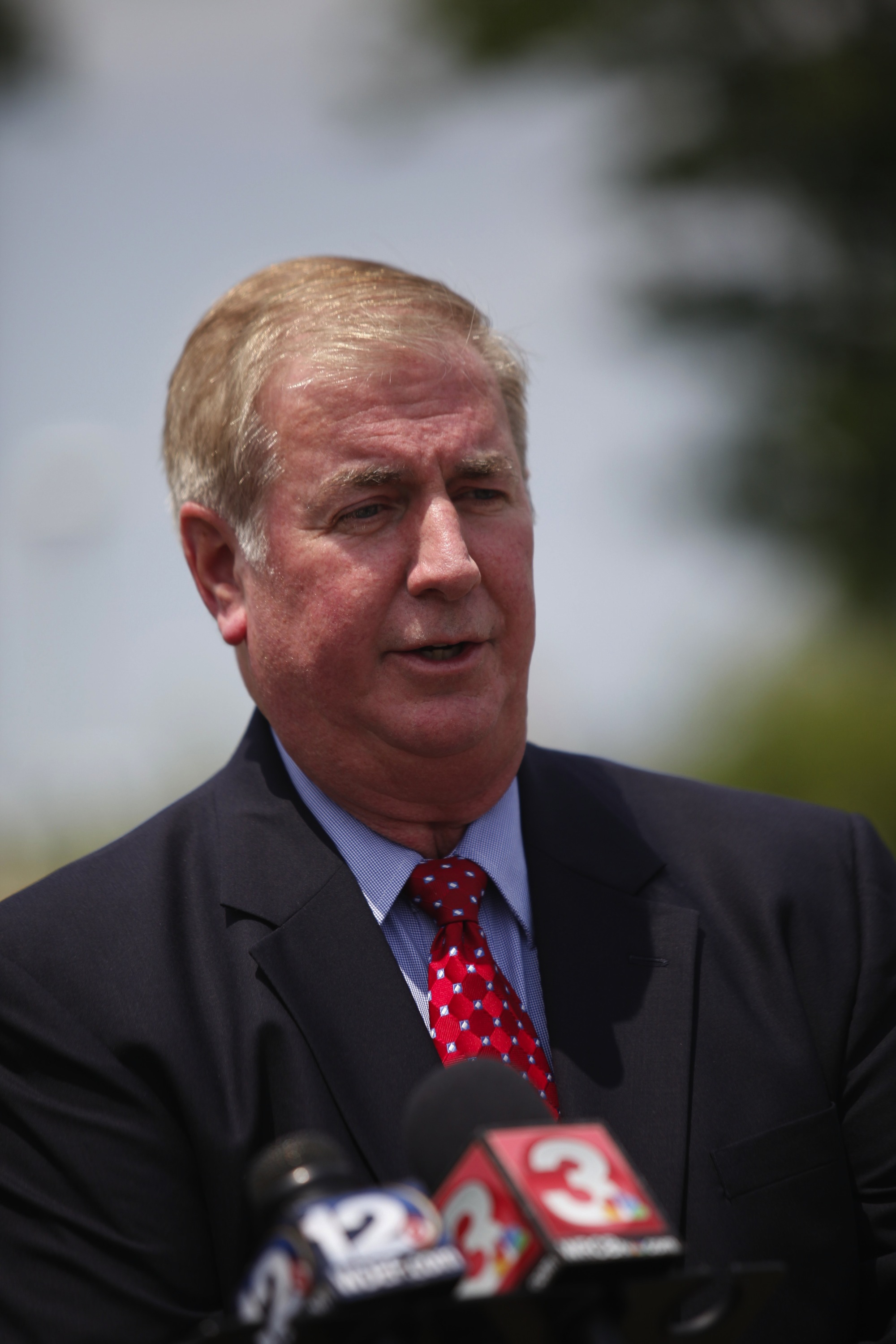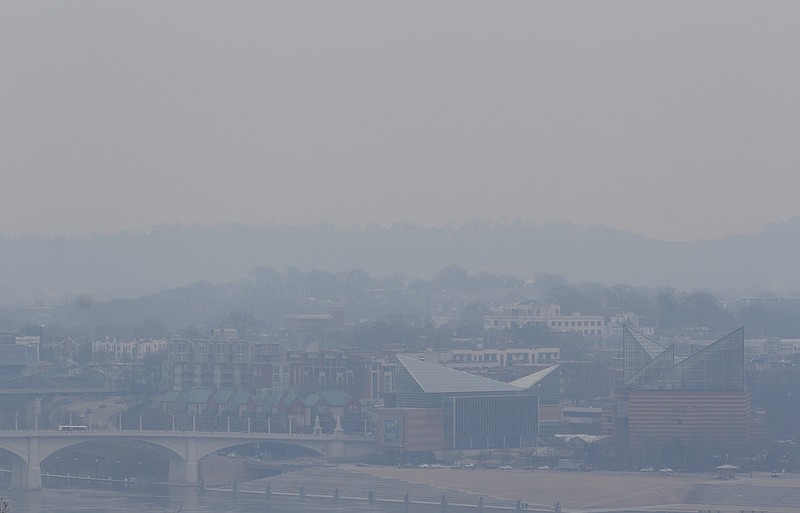Even with the new, stricter ozone standards put in place by the Obama administration on Thursday, Chattanooga appears to be in the clear.
The U.S. Environmental Protection Agency announced Thursday that going forward, the new standard for ozone air pollution will be 70 parts per billion, just below the current standard of 75 parts per billion.
The standard means that for every 1 billion air particles sampled, no more than 70 should be ozone pollutants. Ozone is created when sunlight chemically interacts with oxides of nitrogen (NOx) and volatile organic compounds (VOC).
 Staff Photo by Doug Strickland/Chattanooga Times Free Press - June 15, 2012. Bob Colby, director of the Chattanooga Hamilton County Air Pollution and Control Bureau, at a press conference held by U.S. Sen. Lamar Alexander near the Volkswagen plant in Chattanooga, Tenn. on Friday. Alexander held the press conference to announce his support for the utility MACT rule which will require upgrades of pollution controls on coal plants.
Staff Photo by Doug Strickland/Chattanooga Times Free Press - June 15, 2012. Bob Colby, director of the Chattanooga Hamilton County Air Pollution and Control Bureau, at a press conference held by U.S. Sen. Lamar Alexander near the Volkswagen plant in Chattanooga, Tenn. on Friday. Alexander held the press conference to announce his support for the utility MACT rule which will require upgrades of pollution controls on coal plants.Such harmful pollutants are released in automobile emissions, industrial facilities, gasoline vapors and chemical propellants, like the ones found in many spray paints.
Bob Colby, director of the Chattanooga-Hamilton County Air Pollution Control Bureau, said Thursday that Chattanooga's air tested at 68 parts per billion.
Rainy, cloudy days are good for ozone creation. Ozone measurements can vary day-to-day. Sunny, cloudless summer days may yield higher ozone measurements.
But EPA requires a three-year average for ozone readings, with the fourth-highest average recording being the threshold.
For instance, over a sample three-year testing period. Chattanooga's top four average ozone readings were 80, 76, 73 and 69 parts per billion. That means the city should meet new ozone standards.
Colby said the city's highest readings so far this year have been recorded at the Eastside Utility District near the Enterprise South industrial park. The site has recorded a peak 80 parts per billion reading, but the fourth-highest reading came in below the 70 parts per billion threshold.
"So we're good," said Colby. "We have good, healthy air for people to breathe."
He also said historically, ozone pollution is on the decline in Chattanooga since the Scenic City was rated by the federal government in 1969 as America's smoggiest city.
And while it's uncertain what 2016 will hold, Colby said right now there's reason to believe that trend will continue.
"We don't know what it will bring, but we would anticipate that those numbers will continue to go down and the air will be even cleaner because we've had TVA totally shut down their coal burning at the Widows Creek plant about 35 miles southwest of Chattanooga," Colby said.
Also, the rise of more fuel-efficient and cleaner-burning cars and trucks is expected to help lower ozone pollution, he said.
EPA's announcement of the new rules Thursday brought complaints from both manufacturers worried the rules will harm U.S. production and environmental groups who thought regulators should have adopted stricter standards.
"EPA's proposal to implement a more stringent ozone standard carries a catastrophic price tag our communities simply cannot afford," said Mike Duncan, a former chairman of the Tennessee Valley Authority who is now president of the American Coalition for Clean Coal Electricity.
Jay Simmons, president of the National Association of Manufactuers, called the new rules "overly burdensome, costly and misguided.
"After an unprecedented level of outreach by manufacturers and other stakeholders, the worst-case scenario was avoided," he said. "But make no mistake: the new ozone standard will inflict pain on companies that build things in America - and destroy job opportunities for American workers. Now it's time for Congress to step up and take a stand for working families."
The new federal benchmark for clean air was last updated in 2008, when the Bush administration rejected recommendations from scientists who warned that the administration's approved 75 parts per billion (ppb) standard was insufficient to protect public health.
The Sierra Club and other environmental groups said EPA should have adopted a standard of 60 parts per billion that some health experts wanted to protect those with asthma and breathing problems.
According to the American Lung Association, inhaling smog pollution is like getting a sunburn on your lungs and often results in immediate breathing trouble. Long-term exposure to smog pollution is linked to chronic respiratory diseases, reproductive and developmental harm, and even premature death.
"I'm very disappointed that the EPA and President [Barack] Obama enacted such a weak smog standard, considering how damaging it is to our environment and public health," said Henry Spratt, a professor of biology, geology, and environmental science at the University of Tennessee at Chattanooga. "Although today's standard is an improvement over the 2008 standard, it's very disheartening that it doesn't go far enough to cut pollution and protect public health."
The Associated Press and Business Editor Dave Flessner contributed to this report.
Contact staff writer Alex Green at agreen@timesfreepress.com or 423-757-6480.
